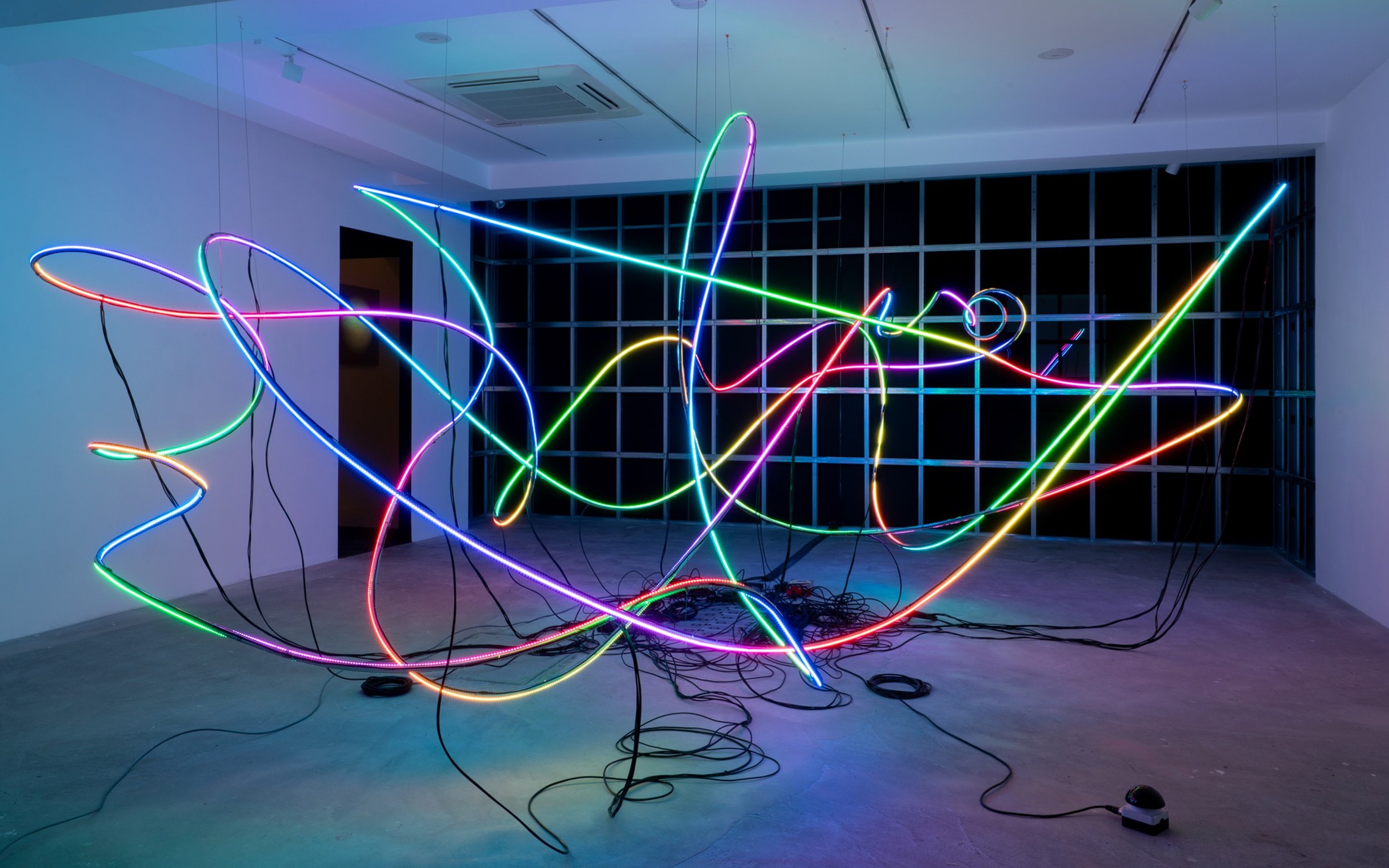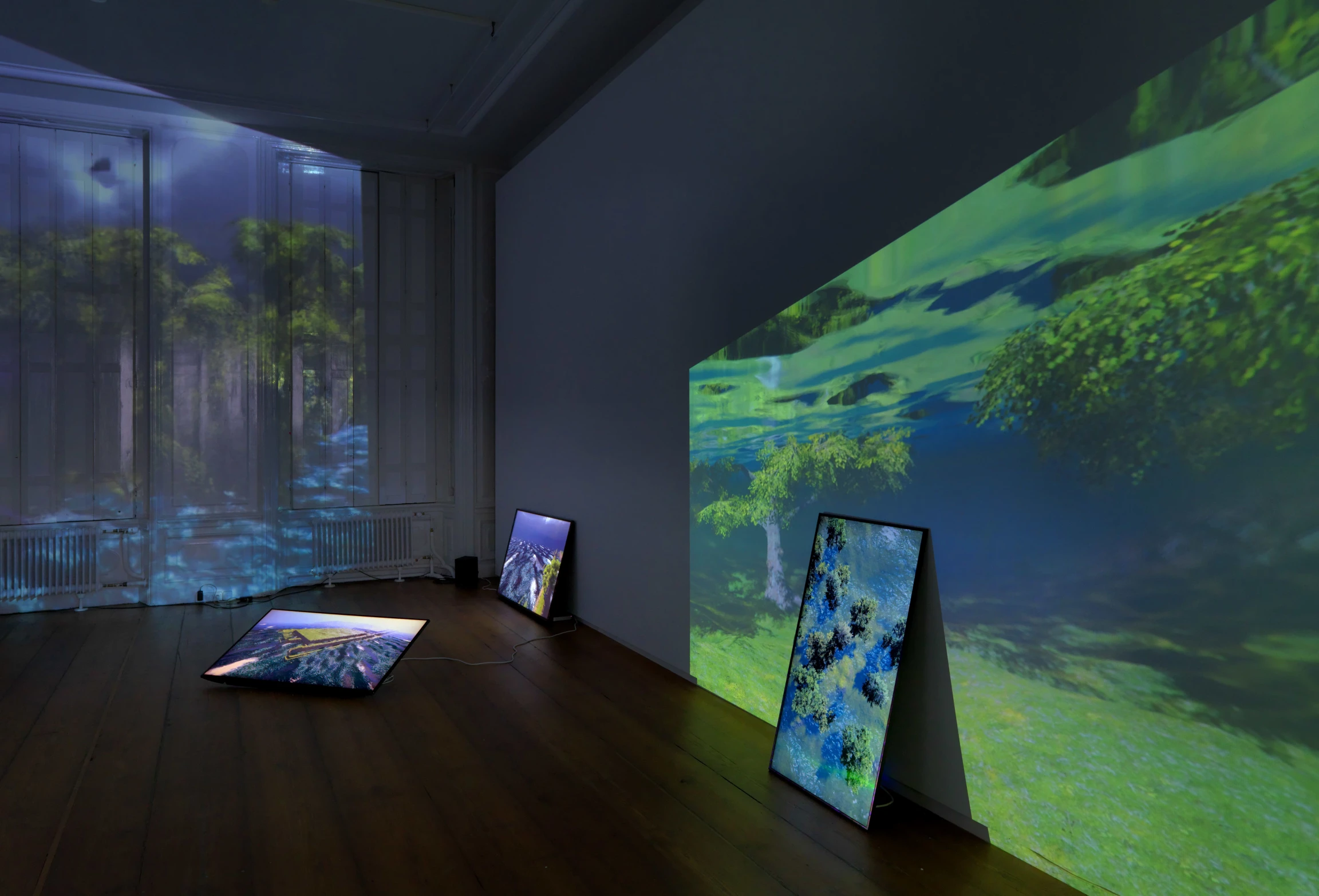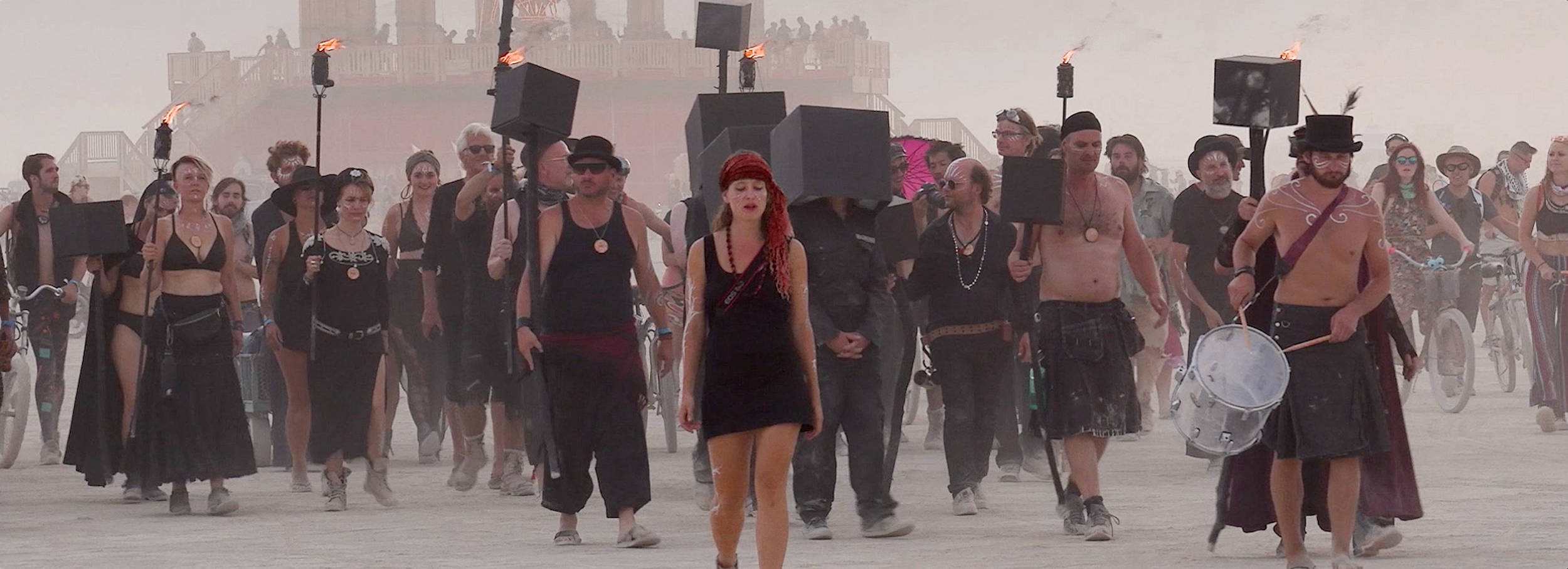
Digital culture is of great value and importance to the Netherlands.
Spiraling Into Infinity II, Children of the Light
Values of digital culture:
-

Intrinsic artistic value
In the first place, digital culture has an intrinsic artistic value; it can be an autonomous art form in its own right. This is evident, for example, in the work Performing a Landscape Performing a Landscape by Jan Robert Leegte, an installation in which a flooding landscape is simulated by a game engine.
-

Combining different fields
At the same time, digital culture often brings together diverse fields: from gaming to media and entertainment, from architecture to healthcare and education, from the museum to the commercial, digital culture is everywhere. An example is E.E.G. Kiss by Karen Lancel and Hermen Maat, in which a kiss is archived by recording brain activity.
-

Interdisciplinary
Digital culture is by definition interdisciplinary; it brings together storytelling, design, software development, interaction design, experience design, sound design, spatial design, hardware and software, smell, taste, sight, sound, touch, etc. A good example is Symbiosis by Polymorf, in which the visitor experiences a Donna Haraway-inspired story set 200 years in the future through scent machines, specially designed soft robotics costumes, VR and food.
-

Driver of innovation
Digital culture is a driving force for innovation, also beyond the cultural sector, with makers playing a strong pioneering role. It is also a catalyst for co-creation and brings together new groups of people. An example is DEEP VR by Monobanda and Owen Harris, investigating a new way of treating anxiety disorders in children.
-

Dramaturgy of new media
Creators of digital culture projects frequently operate on the boundaries of different media, experimenting with emerging media and exploring their dramaturgy, and conducting fundamental research. Consider the use of spatial audio to steer the viewing direction in virtual reality (as in the works of Steye Hallema, such as his 360-degree music video ‘Steye & the Bizonkid’ or the virtual reality tragicomedy ‘Ashes to Ashes’, a collaboration between Steye Hallema and Jamille van Wijngaarden (film directors) and Ingejan Ligthart Schenk (theatre maker), Submarine Channel and WeMakeVR.
-

Criticism of technology
Creators of digital culture sometimes directly or indirectly criticise technology in their work and explore its impact on our daily lives. Examples include the unsolvable escape room ‘I want to delete it all - but not now’-data-escaperoom by media artist Roos Groothuizen, or the privacy-friendly smart home Candle by technology critic Tijmen Schep.
-

Dutch cultural heritage
Digital culture is valuable to Dutch cultural heritage. It explores our relationship to digital technology and creates stories with and about it. It deepens the understanding of Dutch heritage – as in the interactive version of The Garden of Earthly Delights by Hieronymus Bosch by public broadcaster NTR – and is part of Dutch cultural heritage in its own right, from the EboSuits-experimenten by EboMan to the international gaming mega hits KillZone 2 and Horizon Forbidden West by the Dutch game studio Guerrilla Games.
-

Reaching a wider audience
Digital culture is often also used to reach a wider audience, as in the grant scheme ‘Makers buiten het boek’ (‘Makers outside the book’) run by the Dutch Foundation for Literature, aimed at bringing literature to new audience groups via different platforms. Digital culture also offers opportunities for young people who may not be so concerned with traditional culture, and for children engaged by interactive exhibitions in museums, such as the National Maritime Museum, the Children’s Book Museum, Wereldmuseum Leiden, the Maritime Museum Rotterdam or the ARTIS-Groote Museum.
-

Positive behaviour change
Due to the immersive nature of digital culture, it also lends itself well to the promotion of positive behavioural change and democratisation through technology. Immersion is used as a means to evoke understanding and compassion by virtually putting the viewer/player/spectator in someone else’s shoes. An example is the Dutch virtual reality project ‘Meet the soldier’, which enabled two rival Ugandan warriors to experience each other’s tribe in VR and thus become closer.
-

Training
Due to power of immersion in a situation in VR, these types of digital techniques are also often used for training purposes, in fields from law enforcement, mechanics and medicine to space travel, business, and science and technology communications. The company VR Owl has made a survey of VR for training purposes. Makers in the field comprise professional storytellers, coders, designers and world builders who use their skills to create believable worlds
-

Economic value
Thanks to the activities in social behaviour change, training purposes and creative applications, digital culture also has great economic value as a Dutch export product, whether in the form of individual techniques and experiments or of complete games and projects. Many of our digital culture makers are so specialised in their discipline that they often also play a leading role in the international market. Examples include the work of Studio Drift or the light sculptures presented by Children of the Light in collaboration with musicians such as Nicolas Jaar and Philip Glass.
-

Educational value
Digital culture also offers an educational playground for primary and secondary school pupils, for example at Cinekid Medialab or within the Creative Code programme developed by MU Hybrid Art House. A good example of an original young maker using digital culture in education is Alvin Arthur who has developed an embodied e-learning method to teach children programming through dance. Moreover, digital culture plays a valuable educational role for novice makers, within courses in gaming, new media, sound design, creative technology and interactive media design, and at music schools and art academies.
-

Talent development
Finally, within the field of digital culture, there is space for Dutch and international talent development, for example at the IDFA Doclab R&D programme or at Waag Labs. Here Dutch and international artists regularly work together during workshops and on various programmes. In addition to developing talent, such settings also enable the development of new tools and models.

Burningman Solipmission - WeMakeVR